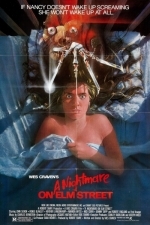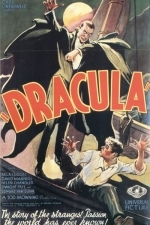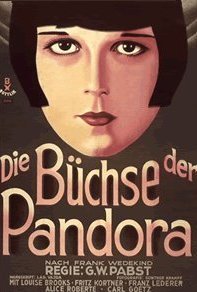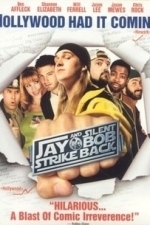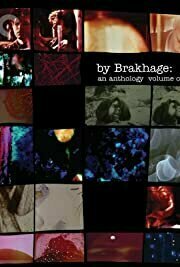Search
Barry Newman (204 KP) rated A Nightmare on Elm Street (1984) in Movies
Feb 1, 2020
The original and by far the best of the Nightmare series. Wes Craven’s film is like most 80’s movies looking a little dated in 2019 particularly in its special effects but to me still holds up very well as an original and unsettling horror thriller that puts a unique supernatural spin on the well established slasher formula. The film’s ace is in it’s boogeyman Freddy Krueger, coming after the silent killers of ‘Halloween’ and ‘Friday the 13th’ Robert Englund’s iconic Freddy actually had a personality and the sequels realising his popularity put him front and centre with much more screen time and subsequently making him considerably less scary . Craven conjures up some memorable kill scenes here and the concept of being vulnerable somewhere seemingly as safe as in your dreams makes for a great horror movie.
RəX Regent (349 KP) rated Dracula (English) (1931) in Movies
Mar 7, 2019
Where it all began...
Contains spoilers, click to show
The year was 1931: Two years after the success of The Jazz Singer and the final introduction of sound movies into the mainstream, sound was still revolutionising the industry. But in 1931, a bit like 3D now, there was still much confusion over to how make films, with directors, producers and actors alike, were still moving over from the suddenly dated silent era, with varying success.
Tod Browning was a man who would unfortunately find little success in the sound era, but not necessarily because he couldn't move with the times, but because his career was derailed a couple of years later by his disturbing horror pic, Freaks.
Dracula was shot THREE times. One, this one, was the conventional sound version that we all know. An other was shot at night and in Spanish for the benefit of that audience, which the studio supposedly preferred. This was quite common at this time, but little known nowadays. And the third was a straight forward silent version for the many theatres still un-equipped to handle sound.
But the styles of the silent era are all over this film. From the long silent reactions shots and the over acting, especially by Bela Lagosi in the titular role. This was also the adaptation of the stage adaptation of Bram Stoker's chiller, and was faithfully adapted from that source, hence the lack of more complex special effects, with bats on strings and fog machines, over more cinematic effects.
The transformation scenes for example, where the Count morphs from a bat to the undead human occur off-screen, rather than some form of cross fade etc. Is this a choice driven by lack of money? Lack of cinematic ambition of a choice to stick to the stage material? To be honest, I have too little knowledge or experience of Tod Browning's work to suggest a reason, but when all's said and done, it did work.
Let's be honest, this is 80 years old and is not the least bit scary and it is hard not to laugh, but in context, I'm sure it worked well at the time and the story is well conveyed. Lagosi's undead performance is hammy by today's standards but he was somewhat likable. He was very deliberate, slow and the silent era has certainly left its scars, as the subtly of sound performing was yet to take hold.
But this is the sort of film were silent melodramatic acting still worked. This is of course a piece Gothic Horror, the home of melodrama if ever there was one. This is surly a product of its time, both as the industry went through one of it's most dramatic changes, which ended so many careers as well a created so many new ones, but it's also, let's not forget, the first direct adaptation of Bram Stoker's book, besides the 1922 German version, Nosferatu, which changes a fair few details to try to get around the copyright, failing to do so mind, resulting in failed bid to have every copy of the film destroyed.
This is the film that ingrained the image of the Dracula that we know today into popular culture. This was were the Universal horror franchise began. For whatever faults it has by today's standards, it did something right.
Tod Browning was a man who would unfortunately find little success in the sound era, but not necessarily because he couldn't move with the times, but because his career was derailed a couple of years later by his disturbing horror pic, Freaks.
Dracula was shot THREE times. One, this one, was the conventional sound version that we all know. An other was shot at night and in Spanish for the benefit of that audience, which the studio supposedly preferred. This was quite common at this time, but little known nowadays. And the third was a straight forward silent version for the many theatres still un-equipped to handle sound.
But the styles of the silent era are all over this film. From the long silent reactions shots and the over acting, especially by Bela Lagosi in the titular role. This was also the adaptation of the stage adaptation of Bram Stoker's chiller, and was faithfully adapted from that source, hence the lack of more complex special effects, with bats on strings and fog machines, over more cinematic effects.
The transformation scenes for example, where the Count morphs from a bat to the undead human occur off-screen, rather than some form of cross fade etc. Is this a choice driven by lack of money? Lack of cinematic ambition of a choice to stick to the stage material? To be honest, I have too little knowledge or experience of Tod Browning's work to suggest a reason, but when all's said and done, it did work.
Let's be honest, this is 80 years old and is not the least bit scary and it is hard not to laugh, but in context, I'm sure it worked well at the time and the story is well conveyed. Lagosi's undead performance is hammy by today's standards but he was somewhat likable. He was very deliberate, slow and the silent era has certainly left its scars, as the subtly of sound performing was yet to take hold.
But this is the sort of film were silent melodramatic acting still worked. This is of course a piece Gothic Horror, the home of melodrama if ever there was one. This is surly a product of its time, both as the industry went through one of it's most dramatic changes, which ended so many careers as well a created so many new ones, but it's also, let's not forget, the first direct adaptation of Bram Stoker's book, besides the 1922 German version, Nosferatu, which changes a fair few details to try to get around the copyright, failing to do so mind, resulting in failed bid to have every copy of the film destroyed.
This is the film that ingrained the image of the Dracula that we know today into popular culture. This was were the Universal horror franchise began. For whatever faults it has by today's standards, it did something right.
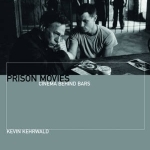
Prison Movies: Cinema Behind Bars
Book
Prison Movies: Cinema Behind Bars traces the public fascination with incarceration from the silent...
Benny Sadfie recommended City Lights (1931) in Movies (curated)
Zoe Saldana recommended Pandora's Box (1929) in Movies (curated)

The Phantom Carriage (Körkarlen) (1921)
Movie
The last person to die on New Year’s Eve before the clock strikes twelve is doomed to take the...
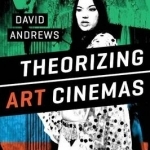
Theorizing Art Cinemas: Foreign, Cult, Avant-Garde, and Beyond
Book
The term "art cinema" has been applied to many cinematic projects, including the film d'art...
Matthew Scott (7 KP) rated Jay and Silent Bob Strike Back (2001) in Movies
Mar 25, 2019
Greatest movie ever? MoviePoopChute.com thinks not!
There is not a more positive culture relevant movie in existence. If you like any movie or TV show from the 70s-90s, chances are somebody from that show is in this movie. Mark Hamil, Ben Affleck, Matt Damon, Carrie Fisher, George Carlin, Pie fucker, that dude that screwed Joey on Dawson's, Stiffler, not to mention hetero life mates Jay and Silent Bob! The jokes on this movie are a mile a minute, so you need to pay attention if you want to catch them all. If you're new to Kevin Smith and his impulsive friend Jason Mewes, then check out their Smodcast podcasts, or any of the other movies they've done together. Mallrats, Clerks, Dogma, Chasing Amy, etc. This is a must see for any fan of pop culture. This movie is like every Funko Pop figure wrapped into one.
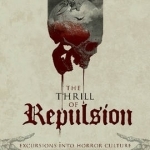
The Thrill of Repulsion: Excursions into Horror Culture
Book
This collection of carefully curated lists, articles, and interviews celebrates the beleaguered...
